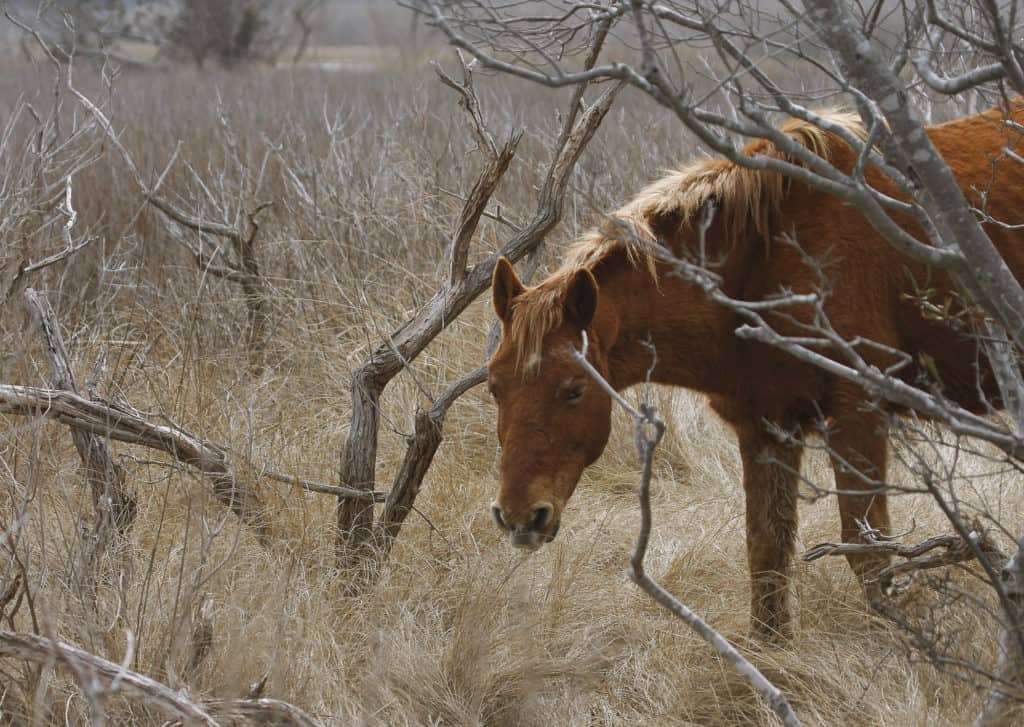Creature Feature

The Horses of Assateague Island
By Wayne Bierbaum
I pass about a dozen horse farms during my trip from home to work. I have been told about all the different types of horses that are represented in Anne Arundel County. I have to admit that I am not a horse person and the names fly past me: American Cream, Arabian, Paint, Palomino, Thoroughbred, Quarter Horse etc. But years ago, I heard that a Chincoteague pony was in the area.
The Chincoteague pony is a registered breed that lives an isolated existence on Assateague Island. They are about 13.2 hands tall (54 inches) and come in multiple colors. Their diet on the island is low in nutritional value which has caused them to be stunted in size and have a bloated appearing abdomen.
The horses on the island are divided into two herds with each group treated differently. The herd on the Maryland end is treated and managed by the National Park Service. There, they are known as “Assateague horses”.
The herd on the Virginia end are separated from the north by a fence and are owned and managed by the Chincoteague Volunteer Fire Company. A permit by the U.S. Fish and Wildlife Service allows the fire company to manage 150 horses. To maintain the herd size, in mid-July, the horses are rounded up and forced to swim from Assateague to Chincoteague Island. There, healthy young horses are auctioned off. Those auctioned horses are said to be good-natured, smart and make great companion animals.
At the Maryland end of the island, the size of the herd is around 78 and maintained through the use of hormone darts. Mares are allowed to have one foal in their lifetime and sometimes two.
The horses tend to hang out in groups of two to 12 and are generally quiet and passive. But there are reports of people, upon approaching too closely, being bitten or kicked. The horses are also injured by people, by cars and human feeding. Recently a mare named Moonshadow was killed and her foal injured by a hit-and-run driver. The foal has been moved to the Virginia side and will be monitored more closely there.
Although there are stories of ancient Spanish shipwrecks releasing the horses, more than likely the horses are from colonists releasing them on the island to avoid taxes and penalties when animals were kept near homesteads.
These horses live in very stressful conditions. They have sparse food resources. The grasses they eat have little nutrition and a high salt content. Besides the biting flies and mosquitoes, they have little protection against hurricanes and freezing weather.
In 1947 Marguerite Henry published a story about a Chincoteague pony, Misty of Chincoteague. Misty, a 1961 movie by 20th Century Fox, was based on the book. It is interesting that the story starts with a Spanish galleon shipwreck.
When you visit Assateague Island follow the rules in regards to the horses. They are not pets and should not be fed or approached. And whatever you do, do not speed on the roads.
If you would like a good-natured small horse or large pony, consider going to the Chincoteague pony penning and auction, but it will have to be next year as COVID has cancelled this year’s auction as well as the annual Pony Swim (www.chincoteague.com/index.html).
